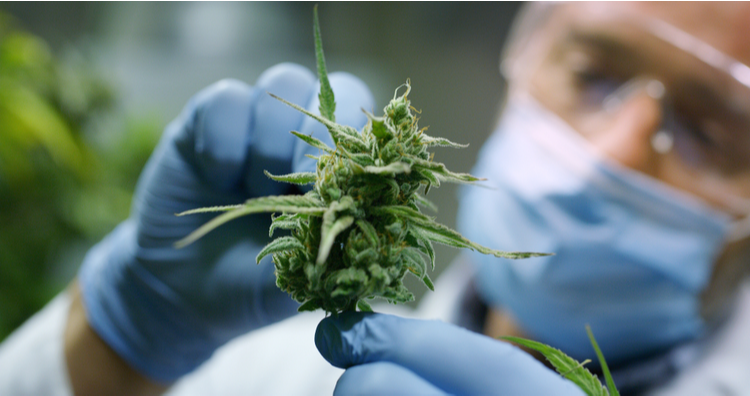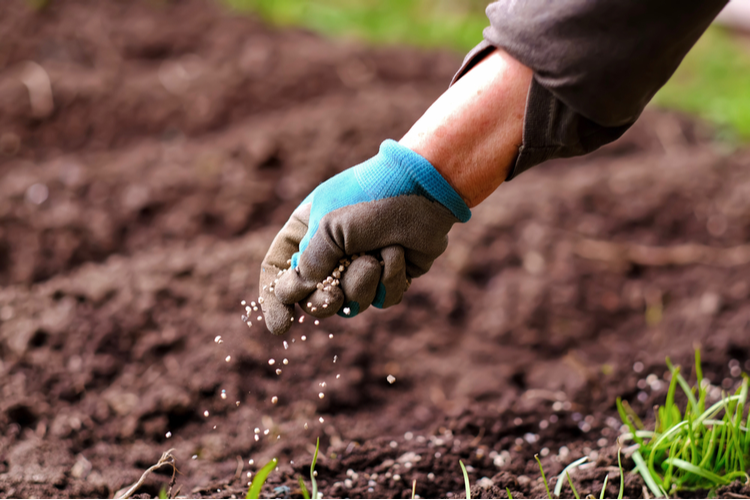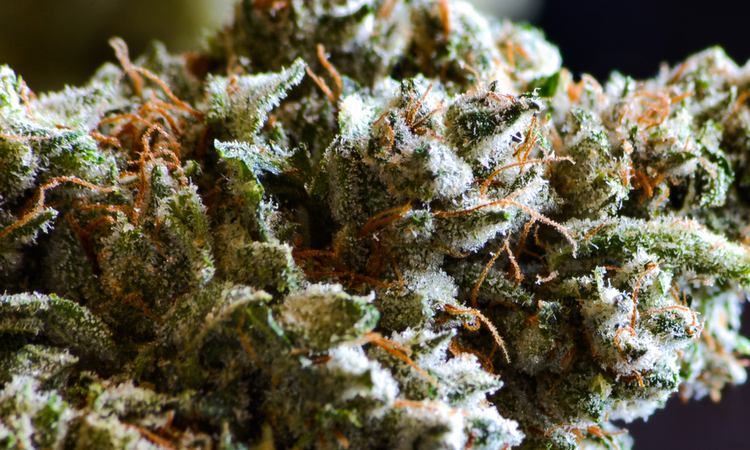How to recognize cannabis flower contamination?
- Good vs. bad material: How to tell the difference
- Different types of impurities in cannabis
- How to avoid buying contaminated hemp buds
- What can you do with contaminated material?
Disclaimer: All information provided in this article is for educational purposes only. The article only describes possible uses of CBD flowers, provided that these flowers do not contain more than 0.3% THC. The purpose of this article is in no way to seduce, encourage, or incite anyone to abuse any addictive substances. This article is not suitable for persons under the age of 18.
You may be proud of your ability to choose the best buds, but even the most discerning of us will encounter contaminated cannabis from time to time. This can be revealed by its physical appearance, taste, or structure. In the following text, we will advise you on how to recognize impurities and how to avoid them in the future.
Sometimes you may not examine the buds closely enough, or you may encounter an unfamiliar strain. The flowers may look fine at first, but a closer inspection will reveal that something is wrong. You may not immediately recognize what is wrong, but you will notice a problem in the appearance, smell, or even taste, which will tell you that something is going on.
Good vs. bad material: How to tell the difference
Before you can determine what exactly is in (or on) your cannabis, you need to know how to analyze it properly. Fortunately, this involves nothing more than touching and smelling it. However, if you are unsure, there are other ways to find contaminants.
Step 1: Examine the material visually
At first, you won’t find any signs of contamination other than those visible on the surface of the buds. We all love buds covered in resin crystals, but if they seem too coated with a shiny crystalline substance, it may not be caused by trichomes. You can shake the buds to check for sand, crystals, dust, or other substances. If they don’t shake out of the buds, look in the bag, as suspicious substances may remain there.
A visual inspection may be sufficient, but for a thorough visual inspection, you will need a microscope. You probably don’t have fully certified laboratory equipment at home, but pocket microscopes are affordable, convenient to use, and offer a much more detailed view of the buds.
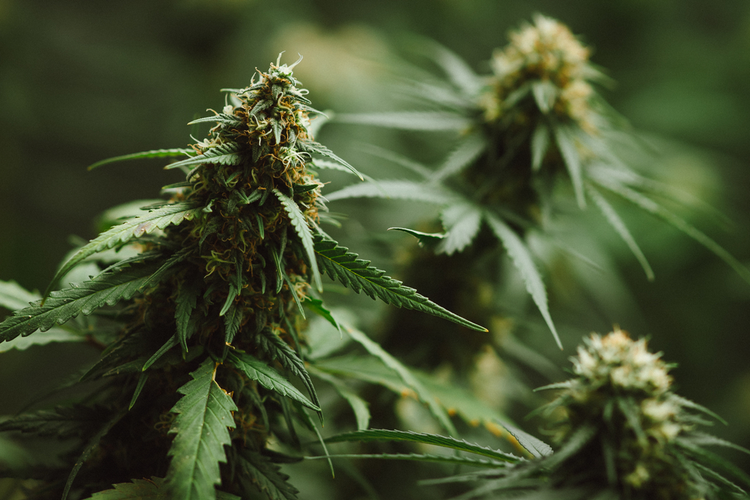
Step 2: Use your sense of touch
If everything looks fine at first glance, touch should bring you closer to the answer. When you pick up the buds, are they slightly heavier than they should be? Do they crumble and fall apart when you apply a little force? How do they react when exposed to air? Do they dry out quickly or retain moisture?
If you answer yes to one or more of these questions, you may be holding contaminated buds. You may not be able to determine what is wrong with them at this point, but these warning signs usually indicate the presence of contamination.
Step 3: Smell the material before consumption
The two tests above can tell you a lot, but sometimes you’ll need to take your testing further to assess the situation in more detail. If you have an unknown strain, this can be a little more difficult. Even so, you should have some idea of what a good bud should smell like. If you notice a slight chemical aroma or something else unnatural in the material, we recommend gathering all your strength and throwing it away.
However, if the smell doesn’t give you any clues, you can try licking the bud and tasting it. This probably won’t tell you much, as most people don’t lick cannabis buds and therefore have no comparison for the “standard” taste. However, if there are any unnatural chemicals in the material, your taste buds will definitely tell you immediately.
Step 4: Pay attention to the ignition
At this point, the buds may seem suitable for smoking or vaporization, and they may be, but the check is not over yet. Now that you have at least basic information, pay attention to how it looks and sounds when the material comes into contact with a flame. Specifically, look at the burning part. Does it spark when you inhale? Do you hear crackling? If so, it is very likely that the bud is contaminated and you should avoid further consumption.
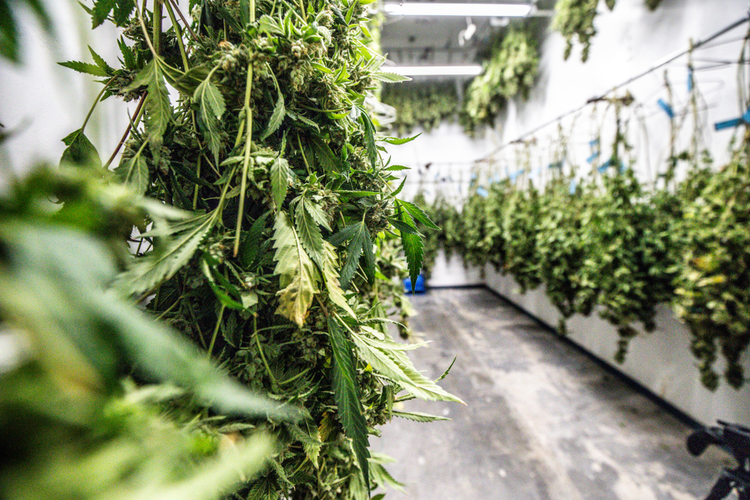
Step 5: Pay attention to the taste and smell of smoke or vapor
In addition to watching for visual and auditory cues, you can further analyze the joint with your sense of smell and taste. For example, if the smoke or vapor smells particularly pungent, the plant material is probably not the only substance that has ignited. Along with an unpleasant odor, contaminated joints are likely to leave a plastic and chemical aftertaste on your tongue. This is not a natural occurrence with cannabis and is a clear sign that you should throw the joints away.
Step 6: Check the ashtray
Finally, you can also get information from the ash left behind after consuming the joints. Ash is usually dark gray, dry, and soft to the touch. However, ash from contaminated joints is black, hard to the touch, and greasy. As you might expect, the oily substances in the ash are the product of heated impurities in the material.
Different types of impurities in cannabis
If you find any impurities, what could they be? There is a wide range of substances that can get into buds. Some are more toxic than others. Next, we’ll look at their effects and the obvious signs of their presence.
Sugar
At first, contamination of cannabis with sugar may sound strange. However, some unscrupulous growers have discovered that they can increase the weight of the plant material by creating a sugar solution, spraying it on the buds, and letting them dry. Since people look for sticky, heavy buds, casual cannabis users and those who are not observant will not notice the problem at first. In fact, they may even be attracted by their appearance, causing them to completely overlook them when selecting their purchase. Unfortunately, smoking or vaporizing them is not pleasant.
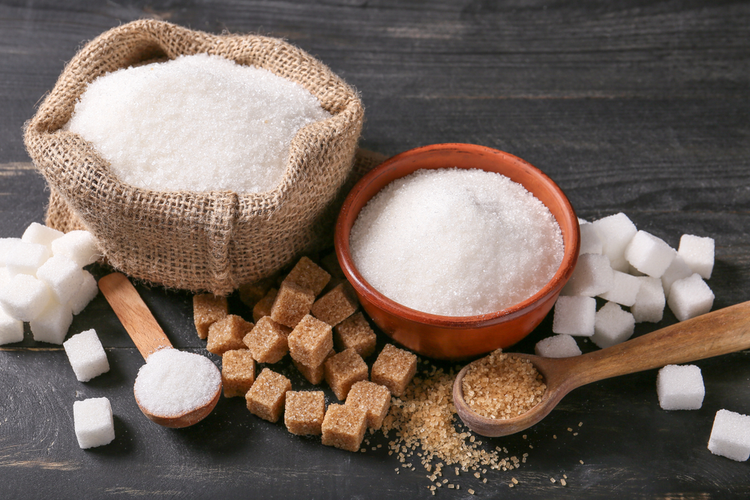
How to recognize the presence of sugar
The main sign that cannabis contains sugar is that it is particularly heavy and sticky. You can also easily detect this fact not only in the smell but also in the taste (it is sugar, after all). Once you discover this, you should dispose of the buds, as burning and inhaling sugar can introduce dangerous toxins into your system. This has been confirmed in the case of sugar content in tobacco, and although the same research has not been conducted on cannabis, it is likely to be the same problem.
Sand
While most reputable CBD producers and sellers check their products for external contamination, some natural residues can slip through inspection. Sand, for example, has a particularly nasty habit of accumulating in buds. Sand is common in environments where cannabis is grown, so there is a significant chance that it could have found its way into the harvested buds. However, untrustworthy and suspicious growers may add sand to their products intentionally to make their buds look shinier and weigh more.
How to detect the presence of sand
Fortunately, much of the sand in the bag will shake out. You will therefore need to be very observant when checking the plant material. You can detect sand by shaking the buds, but you will not find most of it until you crush the buds and start sifting. Once the material is crushed, it should be much easier to find the sand.
Fertilizers for fruit production
Unlike most other fertilizers designed for cannabis, fertilizers for fruit production are specifically designed to increase the amount of certain carbohydrates and sugars in the plant. Plants need a certain amount of these elements to survive, but standard soil usually contains enough.
However, fruit-forming fertilizers can be used to supplement deficiencies or improve growth. More sophisticated growers who are dependent on profit, however, use them in excess. In fact, they treat the cannabis after harvest by dipping the buds in it and letting them dry. This makes them significantly heavier, while the fertilizer remains almost undetectable in the material.
How to recognize the presence of fertilizer for fruit formation
Unfortunately, the presence of these fertilizers in buds is difficult to detect by touch and smell alone. To recognize them with certainty, you will need to determine whether the buds burn too strongly or leave a chemical aftertaste on the tongue. Using a herb full of fertilizers is, of course, extremely unhealthy, and we strongly recommend throwing away any buds contaminated with these substances.
Hairspray
You may find the combination of CBD buds and hairspray crazy. However, if you are displaying your product and want it to look its best, it is an understandable strategy. Of course, these buds should not be used for anything other than display, but some unreliable growers and traders use hairspray on material intended for consumption to ensure a quick profit. The buds are heavier and stickier, and the occasional user may not notice that something is wrong at first glance.
How to recognize the presence of hairspray
If you bring home buds treated with hairspray, you will notice it very quickly. The buds will be suspiciously dense and compact, much more than is naturally possible. If you take a sniff, you will immediately recognize the pungent chemical aroma reminiscent of bad perfume. These clear signs tell you that you should dispose of the material.
Industrial pesticides and fertilizers
Although their presence makes more sense than the use of other contaminants on this list, industrial pesticides and fertilizers in your material can pose a significant health risk. These chemicals may not appear in buds due to negligence, but may be present in plants grown by legal distributors because they are intended to protect crops and maximize growth. Not only can they leave a harsh aftertaste in your mouth, but they can also indicate the presence of a number of dangerous chemicals. Using contaminated buds over a long period of time can lead to serious asthma symptoms, potential neurotoxicity, and various other health problems.
How to recognize the presence of industrial pesticides and fertilizers
Given the risks they pose, it can be very concerning that you may not be able to detect these substances with any of your senses. Yes, we said that their presence can cause the smoke to be harsh and irritating, but this is not always the case. The only guaranteed way to find out whether buds are contaminated or not is to have them tested in a laboratory. Fortunately, reputable sellers test their products before they go on sale, so you don’t have to worry about this.
Lead
Perhaps the most dangerous substance that can end up in your cannabis. It is clear to everyone that lead can be very harmful to human health if heated and inhaled. It usually ends up in plants due to contaminated soil, fertilizer, or even water, accumulating in the root system and gradually finding its way into the buds. If you use contaminated buds, the lead from them can potentially damage your bones, liver, kidneys, and brain. If the user is pregnant, it is worth noting that these risks are also transferred to the fetus.
How to detect the presence of lead
You will probably notice that something is wrong as soon as you start smoking or vaping these buds. But you don’t want to get to that point for the sake of your health. The only way to identify the presence of lead in the material is to use a microscope to look for lead particles. Fortunately, pocket microscopes are fairly affordable, so you don’t have to worry about purchasing professional laboratory equipment just to check your hits.
Mold
Arguably the most common contaminant of cannabis, mold is a constant threat to buds. Whether it develops on the plant, appears after harvest, or is hidden in a drawer after you put it away, if your buds are exposed to unsuitable weather conditions, they can fall victim to mold at any time.
More specifically, excess moisture in the air can get trapped in the dense folds of your buds, where it accumulates over time and allows mold to gradually spread. If you end up inhaling it when using your sticks, it can trigger asthma symptoms or lead to other lung problems. These are just some of the health issues you may encounter.
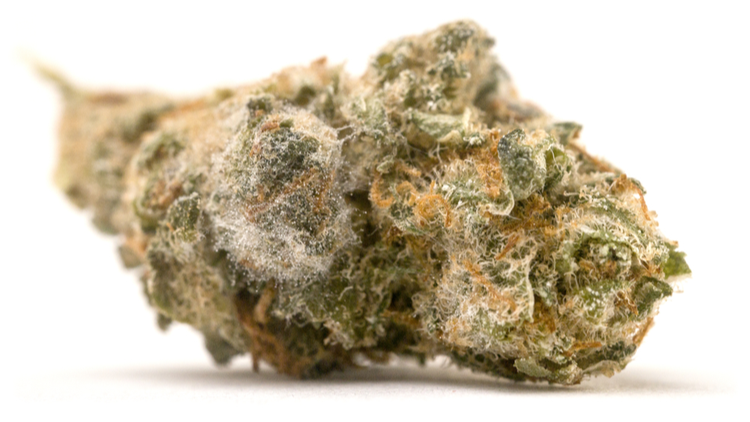
How to recognize the presence of mold
A pocket microscope can help you detect the presence of these contaminants, but honestly, you shouldn’t even need one. If you happen to notice a white coating or suspicious dots spreading on the buds, it is more than likely mold. A strange, unpleasant odor only serves to make detection easier.
Glass
Glass can end up in buds accidentally during the industrial process or thanks to dishonest growers trying to increase the weight and shine of their product. This practice is extremely dangerous and can lead to various problems when consumed, including internal injuries to the throat and lungs. Over time, these scars can accumulate and lead to the development of silicosis in your respiratory system.
How to detect the presence of glass
There are two main ways to detect the presence of glass in cannabis – by sight and by burning. Naturally, you will want to try the first method first. Just take a pocket microscope and look closely at each bud. The glass particles will sparkle and stand out clearly from the trichomes. Burning is more dangerous because when the glass reaches high enough temperatures, it will shatter. As a third option, you can roll a glass over the buds and listen for the crunching sound of glass.
Baby powder
Another well-known additive used in the illegal and unregulated cannabis market is baby powder. The main purpose of its use, as you may have guessed, is to increase the weight of the buds and give the impression that they contain more trichomes. However, by doing so, growers and distributors expose you to the risk of respiratory damage, which could potentially culminate in pulmonary talcosis.
How to recognize the presence of baby powder (talc)
The downside of talc is also your main advantage in recognizing this contaminant. Buds that have been treated with talc are usually much lighter in color than clean buds, and their smell and taste are also significantly muted. Hopefully, you won’t have to do more than look at the buds to recognize this contaminant.
How to avoid buying contaminated hemp buds
Now that you have a much clearer idea of the potential threats, it’s time to find out how to avoid them in the first place. After all, preventive caution is the way to ensure that you don’t encounter any problems.
Buy only from a reputable seller
When purchasing, you should only turn to trusted sellers. They have processes in place to check each product to the best of their ability. After all, their reputation and entire business are at stake, so it is in their best interest to ensure that every product they sell is safe and of high quality.
Check for impurities before purchasing
If you still want to take extra precautions, you can use one of the methods described above before making your purchase. If you are unable to check the product in the store, you should do so when you bring it home. At that point, you won’t save any money, but you can protect your health, which we believe is much more important.
What can you do with contaminated material?
If, despite all precautions, you have purchased contaminated buds, don’t give up. If you have the time and the right materials, you can clean the buds of specific contaminants, such as sugar and sand, using water curing. This won’t get rid of all the impurities, but it will wash out most of them without destroying the cannabinoids or terpenes contained in the buds. As a result, you’ll enjoy a much cleaner and smoother experience. Regardless of how you deal with impurities in cannabis, enjoy your herb responsibly.
Author: Elena Moreau
Photo: Shutterstock
“All information provided on this website, as well as information provided through this website, is for educational purposes only. None of the information contained herein is intended to be a substitute for a medical diagnosis and should not be considered medical advice or recommended treatment. This website does not endorse, condones or advocate the licit or illicit use of narcotic drugs or psychotropic substances or the commission of any other illegal activity. For more information, please see our Disclaimer .”
